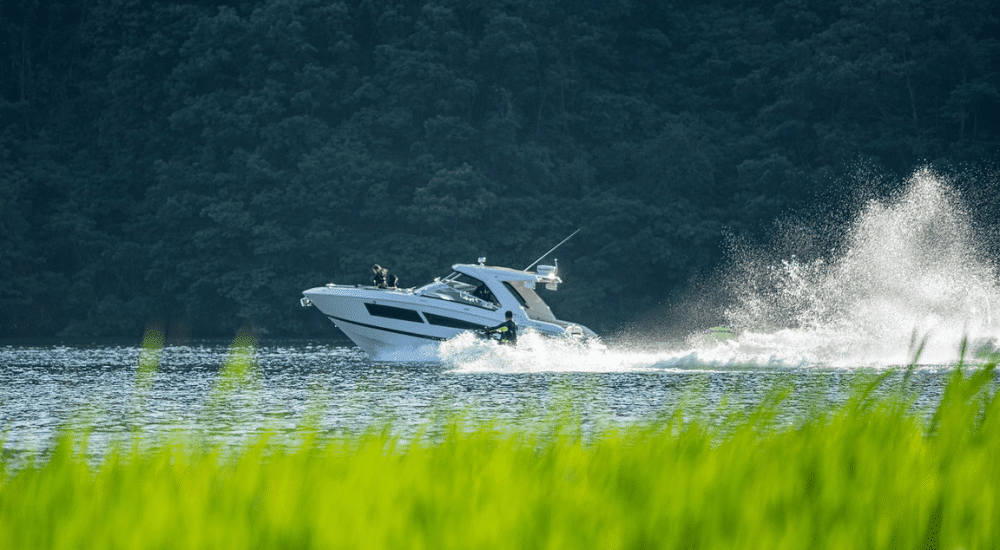What Safety Equipment is Required on a Boat?

Texans are lucky to have many lakes and other navigable bodies of water. In fact, Texas is home to more than 360 miles of coastline and features a larger percentage of inland water than any other state in the entire country. This is why many Texans enjoy getting out on a boat and enjoying what the Lone Star State has to offer.
Unfortunately, with close to 600,000 registered boats in Texas, there will be situations where two or more boats collide, or a boat collides with someone in the water. When these unfortunate incidents occur, it is important for the accident victim to properly assess their legal options to determine if they have grounds to file a civil action to pursue financial restitution for their harms and losses.
What Safety Equipment Should Be on a Boat in Case of an Emergency
The minimum safety equipment standards set forth by the United States Coast Guard are summarized below. For context, the types of safety equipment that need to be on a boat varies (though only slightly) depending on the size of the vessel.
For smaller boats (under 16 feet) and mid-size boats (between 16 feet and 26 feet), the types of safety equipment you should have aboard, according to the Coast Guard, include:
- Life Jackets – One of the most important pieces of safety equipment to have on a boat. Bar none. Public data indicates that a majority of tragic boat accidents feature boats that did not have the requisite number of life jackets on board.
- Registration number
- Lights
- Flotation devices (aside from life jackets)
- Fire Extinguishers
- Visual Distress Signals
- Sound Producing Device
- Backfire Flame Arrestor
The safety equipment listed above is considered to be the bare minimum to comply with boating safety regulations. You should also consider having the following safety equipment to enhance your safety and the safety of any boat passengers aboard your vessel:
- Anchor
- Bailing device
- Cellphone
- Charge bank for your cellphone
- Driver down flag
- First aid kit
- Flashlight
- Knife
- Oars
- Paddles
- Snorkel and mask
- Weather radio
Why Safety Equipment is Necessary on a Boat
Safety equipment is necessary on a boat because when an accident occurs on the open water, the consequences can be devastating. For example, the Texas Parks and Wildlife Department reported that there were more than 200 boating-related accidents in Texas in 2022 resulting in more than 35 deaths. Drowning reportedly accounted for 50 percent of open-water-related deaths and was the leading cause of death in fatal recreational boating accidents. In recreational boat collisions, nearly 70 percent of victims were not wearing a life jacket.
Texas Boating Laws and Any Licensing or Certifications a Boat Operator Needs
In addition to U.S. Coast Guard safety regulations, there are additional state-level guidelines and protocols. For example, the Texas Parks & Wildlife’s Water Safety Act provides further guidance regarding mandatory safety equipment. The rules in the Water Safety Act apply to all public bodies of water in Texas.
Much like the Coast Guard guidelines, the Texas safety guidelines are predicated on the type and size of the vessel. For example, individuals operating powerboats, sailboats, and other manually-operated boats need to have personal floatation devices on board. However, powerboats also need to have a fire extinguisher on board.
In addition to different safety equipment requirements based on the type of vessel, there are different safety requirements depending on the age of the boat operator and, as mentioned, the overall size of the vessel. For example, if you were born on or after September 1, 1993, you are required to complete a Boater Education course in order to operate a boat with a horsepower rating of more than 15 hp in Texas waters.
The local governing body of incorporated cities or towns, county commissioners courts, and political subdivisions can pass rules relating to restricted areas and the operation and equipment of boats it deems necessary for the public safety.
Helpful Tips for Staying Safe When Going In or Near a Body of Water
When it comes to staying safe when going in or near a body of water, having access to a life jacket or comparable flotation device is critically important. For example, drowning-deaths involving children occur frequently in open water, such as lakes, rivers, canals, reservoirs, and retention ponds. In 2016, open-water drownings constituted more than 40 percent of deadly drownings involving minors.
To help reduce the risk of drowning deaths, an important safety protocol is ensuring your children know how to swim. In fact, knowing how to swim helps reduce the risk of drowning by 88 percent.
In addition to learning how to swim. Follow the open water safety tips below:
- Swim in a designated swimming area (i.e., do not get adventurous and try to swim in unsupervised open waters)
- Swim parallel to the shore
- Do not swim alone
- Know the weather for the day and the water conditions
- Develop an understanding of currents
- Wear a Coast Guard-Approved life vest
- Monitor alcohol intake, especially when operating a boat, jet ski, or other vessel
Injured in a Boating Accident or Water-Related Accident? Contact Slack Davis Sanger Today
If you or a loved one was seriously injured in a boat accident in Texas, contact Slack Davis Sanger today. Our team of experienced and respected Texas boat accident lawyers understand applicable rules and regulations governing boating operations in the Lone Star State. In addition, we possess a keen understanding of the risks associated with spending time out on the water.
The boat accident attorneys with Slack Davis Sanger are skilled litigators with a track record of success in helping individuals and families who suffered life-altering injuries in boat and watercraft-related accidents. Our depth of experience has allowed us to develop key pieces of evidence to present to a judge and/or jury to explain how a boat accident happens and who is responsible.
If you are interested in possibly filing a legal claim related to a boat accident, now is the time to act. Why? Because you typically have only a finite period of time to pursue financial restitution for your harms and losses. The statute of limitations for bodily injury claims in Texas is only two years commencing from the date of the accident.
Contact our Texas boat injury lawyers today to schedule a free, confidential case evaluation.

The firm handles cases involving catastrophic personal injuries and deaths. Our work spans three decades of handling airplane and helicopter crashes, truck and car accidents, oilfield and construction accidents, and other devastating accidents. We try lawsuits throughout the country in both federal and state courts and have recovered hundreds of millions of dollars for our clients. To date, we have handled or tried cases in 47 states, read more about our attorneys and firm.
